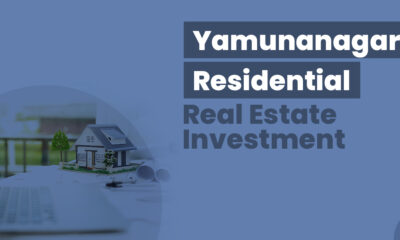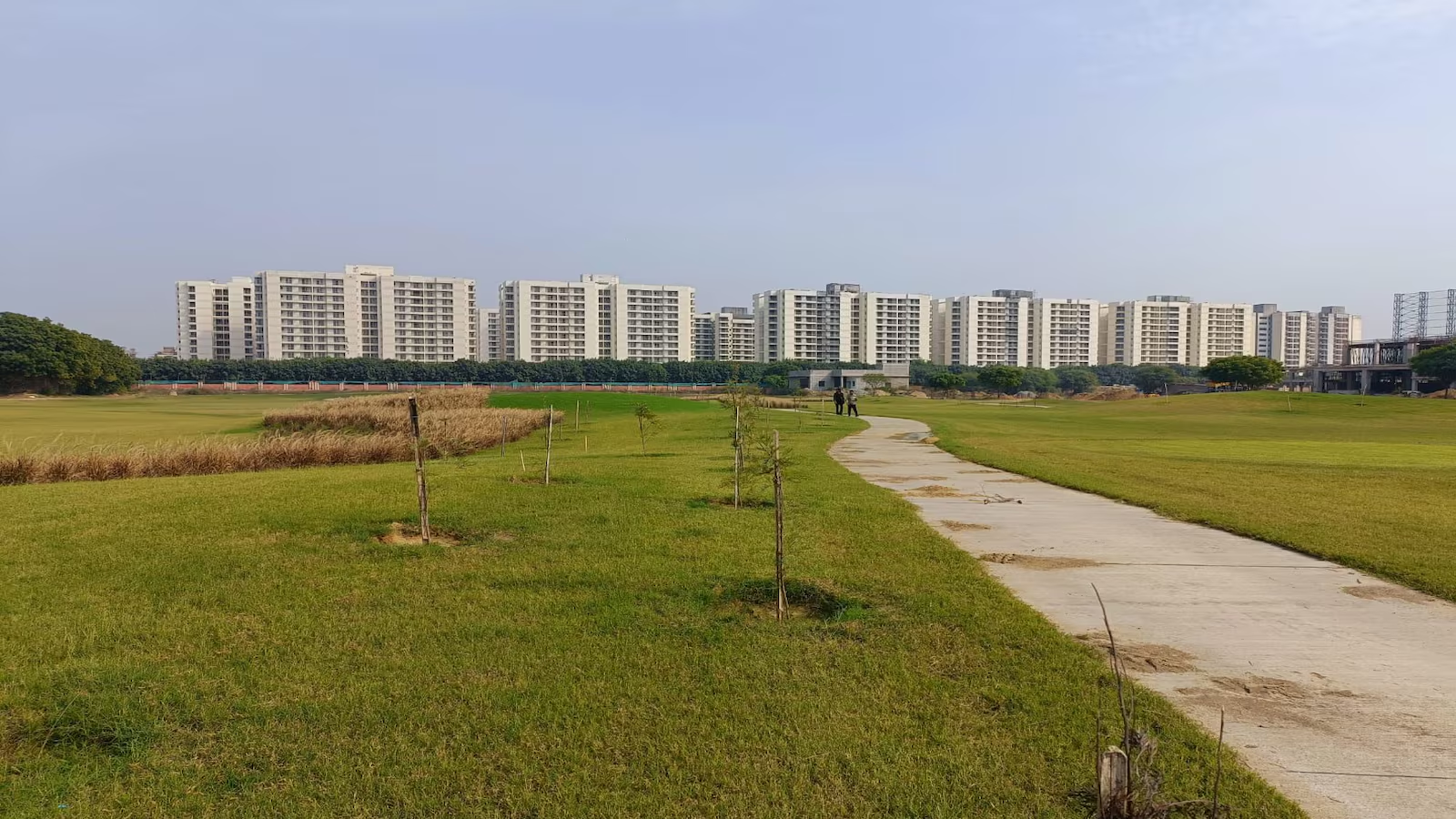News
Retail leasing up 130% Y-o-Y in Jan-Mar’23


National – May 02, 2023 – CBRE South Asia Pvt. Ltd., on Tuesday announced the findings of its report, ‘India Market Monitor – Q1 2023’. The report highlights the growth, trends, and dynamics across various segments of the real estate sector in India.
According to the report, retail sector leasing grew by 130% Y-o-Y to 1.5 mn sq. ft. in Jan-Mar’23. Supply during this period increased by 474% Y-o-Y to 1.1 mn. sq. ft.
During the Jan-Mar’23 period, Ahmedabad led the absorption with a 27% share, followed by Delhi-NCR at 26%, and Bangalore and Chennai at 14% each. The cumulative leasing share of the three cities in total leasing stood at 81%. Ahmedabad saw the highest supply with a 73% share during Jan-Mar’23, followed by Delhi-NCR at 20%.
City-wise absorption in mn. sq. ft City Jan-Mar ‘23 Jan-Mar ‘22 Delhi NCR 0.39 0.07 Mumbai 0.10 0.02 Hyderabad 0.07 0.01 Chennai 0.21 0.07 Bangalore 0.21 0.26 Pune 0.09 0.20 Kolkata 0.02 0.02 Ahmedabad 0.40 0.01 Total 1.5 0.7
According to the report, the Fashion & Apparel segment had a majority share in total leasing activity at 31%, followed by Homeware and Department Stores at 19%, F&B at 11%, Luxury at 8%, and Consumer Electronics at 5%.


Anshuman Magazine, Chairman & CEO – India, South-East Asia, Middle East & Africa, CBRE, said, “Retail supply this year is expected to surpass 2022 levels owing to pent-up supply addition, with several investment-grade projects launched in the past two years set to become operational in 2023. This would give a fillip to primary leasing, which is likely to be the main demand driver for retail space in 2023.”


Ram Chandnani, Managing Director, Advisory & Transactions Services, CBRE India, said, “We believe that retailers will seek spaces beyond conventional malls and high streets to diversify their location plans, thereby enabling supply chain modifications and facilitating customers to shop for any product at any time. Furthermore, omnichannel initiatives such as metaverse and social commerce will witness greater traction.”
Retail Market Outlook:
- Retail supply to surpass 2022 levels owing to pent-up supply addition; several investment-grade projects launched in the past 1.5-2 years also set to become operational in 2023
- This would give a fillip to primary leasing, which is likely to be the main demand driver for retail space in 2023
- Retailers to look beyond traditional malls and high streets to diversify their location strategies which will facilitate supply chain transformation so that consumers are able to shop for any product, any time
- Use of metaverse (to enhance customer experience) and social commerce (involves leveraging social media sentiments) to emerge as key omnichannel strategies
- Retailers likely to continue to ‘right-size’ stores not only to engage customers but also to provide a wide range of choices in stores
Other sector observations
Office: Sustained absorption activity witnessed at the start of the yearAbsorption recorded at 12.6 million sq. ft. in Q1 2023; 9% Y-o-Y growth in leasing 11.6 million sq. ft. supply was recorded in Q1 2023; 31% Y-o-Y jump in supply was witnessed62% Cumulative share of Bangalore, Delhi-NCR and Chennai in leasing activity in Q1 202382% Combined share of Bangalore, Delhi-NCR, Pune and Hyderabad in supply addition in Q1 2023BFSI (22%) and Flexible Space Operators (22%) drove leasing activity in Q1 2023Domestic corporates led the leasing activity in Q1 2023 with a 48% share
Outlook:Current short-term macro-economic uncertainty might put downward pressure on absorption although we believe space take-up activity would pick up pace in the second half of the year as India remains an attractive cost-effective destination and source of highly skilled talentWhile technology corporates would remain a driver of leasing activity, sectoral drivers to become more broad-based due to sustained leasing by BFSI firms, flexible space operators, and engineering & manufacturing companies; moreover, GCCs would also continue to contribute to growth in the medium to long termRobust pipeline of quality assets to ensure steady pace of building completions; yet, vacancy rates to remain range bound due to sustained leasing activityFlight-to-quality leasing sentiments of occupiers would ensure continued interest in investment-grade buildings by leading developers and institutional owners in core locationsThe intense focus on RTO planning and hybrid working would continue to lead to growing significance of workplace strategies in corporate agendas; the need for productive interactions with relevant co-workers could cause occupiers to revisit workplace design standardsResidential: Sector likely to witness continued momentum in sales and launch activityHousing sales jumped nearly 12% Q-o-Q as well as Y-o-Y to more than 78,000 units in Q1 2023. 49% Share of mid-end category in number of units sold in Q1 2023, followed by affordable / budget projects62% Cumulative share of Mumbai, Pune and Delhi-NCR in sales in Q1 2023New unit launches jumped by nearly 35% Y-o-Y to cross the 81,000-unit mark in Q1 202364% Cumulative share of Mumbai, Pune and Delhi-NCR in apartment launches in Q1 2023With shares of 43% and 27%, mid-end and high-end categories dominated unit launches in the country.Outlook:Strong sales and launch momentum expected in the first half of 2023; a minor tapering in activity likely in the middle of the year but its impact could be cushioned by the festive season.Capital value appreciation trends would vary basis the segment, city / micro-market, unsold inventory levels and even project attributes; at the same time, developers likely to be cautious about raising prices lest it impacts homebuyers’ purchasing power.Projects in the higher ticket range (INR 1.5 crore and above) would continue to see traction in sales as the market has witnessed a spate of new launches in this bracket of late; moreover, the impact of rising home mortgage rates would be limited on this segment.Projects with better amenities, focus on health and safety and clean surroundings to further gain an edge amidst evolving consumer preferences.As large developers foray into tier-II cities, we expect to see a higher number of joint ventures and joint development initiatives as they strike partnerships with local players with an aim to manage regulatory hurdles and understand consumer preferences. RE Investment: In 2023, sustained investment activity likely despite recessionary forces in key developed economies slowing the pace of decision-making.Overall capital inflows witnessed in Q1 2023 stood at USD 0.96 billion43% Share of land/development sites, which dominated investments in Q1 2023; followed by the I&L sector (23%)Mumbai, followed by Delhi-NCR and Bangalore, accounted for a cumulative share of nearly 30% in investment inflows in Q1 2023Developers accounted for nearly 65% of investment inflows, followed by institutional investors (17%)80% Share of domestic investors (predominantly developers) in capital inflows in Q1 202320% Share of foreign investors in the total investment during the quarter; investors from the US accounted for 86% of the foreign capital inflows70% share of the total capital inflows in site / land acquisitions were deployed for residential developments, while ~12% were committed for mixed-use developmentsOutlook:Capital inflows in 2023 to remain steady; some tapering expected in the first half owing to recessionary fears in the US and Europe.The year 2023 could see the listing of India’s first retail REIT and fourth office REIT, which would widen investment avenues for investors.Opportunistic bets would continue to witness strong momentum in 2023 amidst considerable interest in greenfield developments across core assets.Partnership models could gain prominence as investors look to mitigate risk and navigate operational challenges, especially amidst external uncertainties.Higher financing cost amidst tighter monetary policy rates due to sticky inflation could impact investor sentiments in the short term.
-



 News3 weeks ago
News3 weeks agoKW Delhi 6 Mall Onboards New Brands
-



 News4 weeks ago
News4 weeks agoManasum Senior Living Launches IKIGAI GOA, A Senior Living Community in North Goa, in collaboration with Prescon Homes
-



 News2 weeks ago
News2 weeks agoGodrej Properties Sells Rs 3k cr+ Homes of Godrej Zenith, Gurugram, within 3 days
-



 News3 weeks ago
News3 weeks agoCommercial Realty Gets Tech Savvy: Fast Construction, Enhanced Convenience
-



 News4 weeks ago
News4 weeks agoBridging India Divide: Top 5 Tier- 2 Cities to Focus On
-



 News4 weeks ago
News4 weeks agoMultipoint Connection – A Definite Boon
-



 News3 weeks ago
News3 weeks agoRBI’s Status Quo on Key Policy Rates to Help Maintain the Real Estate Growth Momentum, Say Industry Stalwarts
-



 News1 week ago
News1 week agoOlive Announces Dhruv Kalro as Co-Founder

















